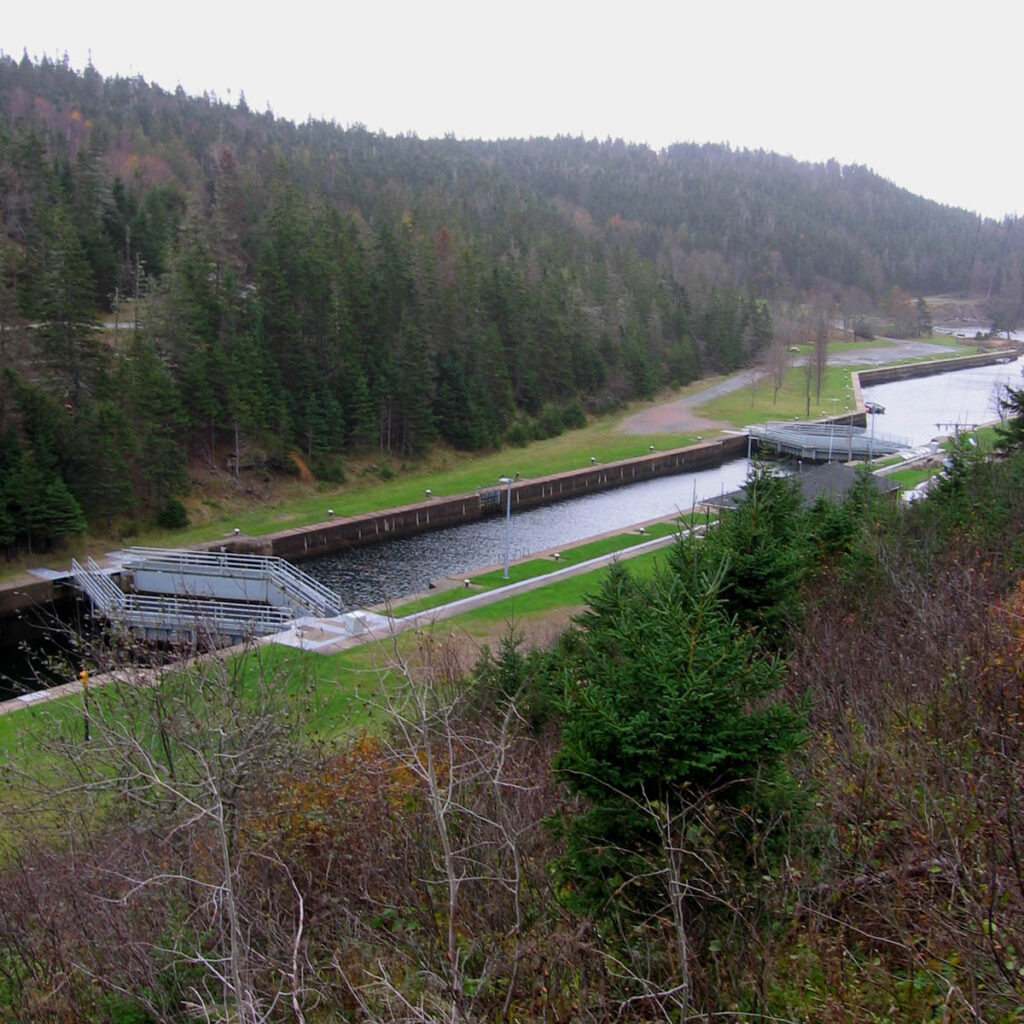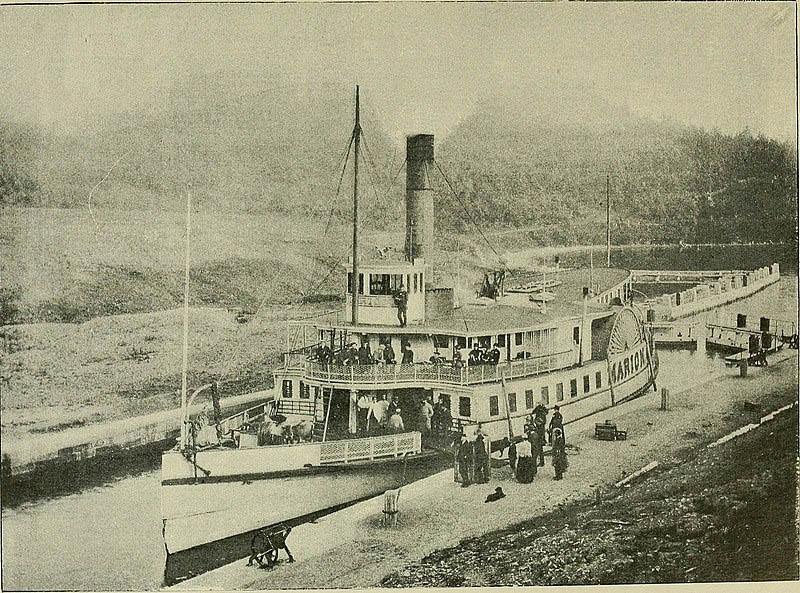The St. Peters Canal is a small shipping canal on Cape Breton Island in eastern Canada. It spans an isthmus in St. Peter’s, Nova Scotia, connecting St. Peters Inlet of Bras d’Or Lake to the north and St. Peters Bay of the Atlantic Ocean to the south.
The St. Peters Canal is Atlantic Canada’s only working canal of national historic significance and an important historic landmark for the Village of St. Peters and Cape Breton Island. The St. Peters Canal is one of over 900 national historic sites in the United States, including nine operational canals.
The size of the lock, which measures 91.44 m (300 ft) long, 14.45 m (47.4 ft) wide, 4.88 m (16 ft) draught, and 32 m air draught, limits the size of vessels transiting the canal (105 ft). When closed, a swing bridge over the canal has a clearance of 6 m (19.69 ft) and is operated from the bridge house on Grenville Street.
The vast majority of canals have unidirectional water flow. That is, the “high” side of the canal remains constant. St. Peter’s Canal is unique in that, due to the difference in tide timing between Bras d’Or Lake and the ocean, the Atlantic side is higher during part of the tide cycle and the lake side is higher during other parts of the tide cycle. As a result, the canal requires unique “double” gates, the only ones in North America. The typical canal lock has two swinging doors at each end that, when closed, form a shallow ‘V’ shape, with the point of the ‘V’ pointing upstream. Each gate at the St. Peter’s Canal lock is made up of four swinging doors that, when closed, form a diamond shape. In practice, the pair of doors forming the upstream pointing ‘V’ are used. Regardless of which side has the higher water level, either one pair or the other will suffice.

History of St Peters Canal
The Mi’kmaq had long traversed the area, portaging their canoes across the isthmus. The canal predated a “haulover road” across the isthmus established in 1650 by French fur trader Nicholas Denys.
In 1825, a feasibility study into the possibility of building a canal was conducted. Construction began in 1854 and was completed in 1869, resulting in a channel 800 m (2,600 ft) long and 30 m (100 ft) wide on average. The canal runs through a 20-meter-high (66-foot-high) solid granite hill, which took 15 years to build. Because the tidal difference between Bras d’Or Lake and the Atlantic Ocean can be up to 1.4 m (4.5 ft), a lock was built to regulate water levels. The original works were designed to accommodate vessels with a draft of 4 m (13 ft), but it was deepened to 5.5 m (18 ft) between 1875 and 1881.
The St. Peters Canal saw relatively heavy use by commercial shipping in the 19th century and early 20th century, during an era of industrial expansion on Cape Breton Island. Additions and renovations, widening the channel and lengthening the locks, continued until 1917. The canal eventually became too small for modern ships and has been used primarily by pleasure boats since the end of the Second World War. The canal continues to serve both pleasure craft and commercial vessels travelling to and from the Bras d’Or Lakes, with about 1,000 lockages recorded for the years 2003 and 2004.
In 1985, Parks Canada embarked on a major project to restore both canal entrances. Every year, from May to October, the St. Peters Canal is open for business. The current swing bridge, which was built in its current location in 2017, is the fifth to span the canal; previous bridges were built in 1869, 1876, 1919, and 1931.
The canal was designated a National Historic Site of Canada in 1929 and was administered by the Federal Department of Railways and Canals and its successor, Transport Canada, until 1972, when it was transferred to Parks Canada, which continues to operate and maintain the site today. According to the Federal Heritage Building Review Office, the Lockmaster’s House, built in 1876, is a “recognized” heritage building.
The Swim The Canal event, which is part of the region’s Nicolas Denys Days, (Denys’ writings on the Acadian lands and peoples were published in two volumes in 1672). debuted in 2014. In 2018, 260 people made their way down the 800-metre channel that connects the Bras d’Or Lake to the Atlantic Ocean.







